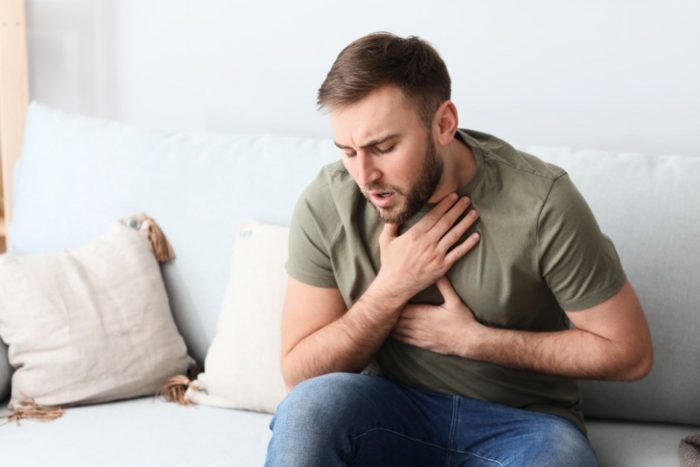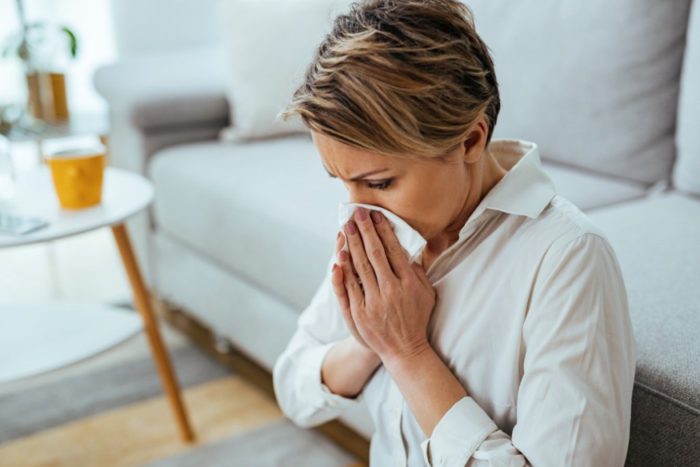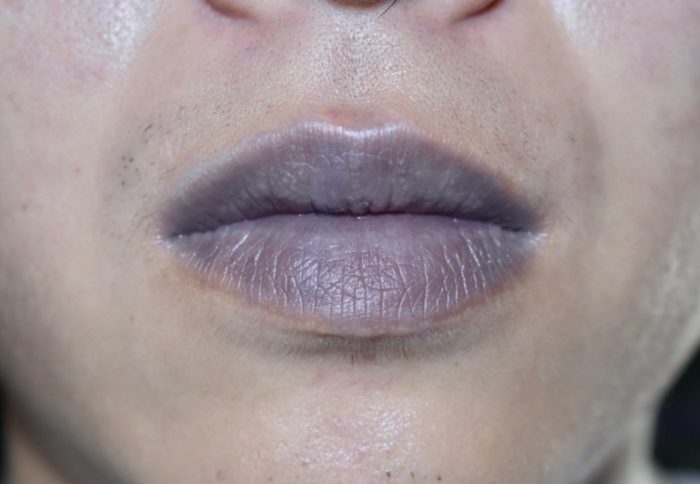“People with COVID-19 have had a wide range of symptoms reported—ranging from mild symptoms to severe illness,” says the CDC. “Symptoms may appear 2-14 days after exposure to the virus. People with these symptoms may have COVID-19″—read on to see if you have any of these symptoms, and to ensure your health and the health of others, don’t miss these Sure Signs You’ve Already Had Coronavirus.
1. Fever or Chills

The is the #1 most common sign you may have COVID-19. “The medical community generally defines a fever as a body temperature above 100.4 degrees Fahrenheit. A body temp between 100.4 and 102.2 degree is usually considered a low-grade fever,” reports OSF Healthcare. “In the age of COVID-19, one of the things people should keep in mind is that if they are having any kind of fever that is persisting, they should probably go get tested,” Dr. Sarah Joseph, MD, an internal medicine and pediatrics specialist, tells OSF.

The CDC says a cough is a sign you may have coronavirus; more specifically, the cough is usually dry. “Considering that COVID-19 irritates lung tissue, the cough is dry and persistent. It is accompanied with shortness of breath and muscle pain,” reports Science Alert. “As disease progresses, the lung tissue is filled with fluid and you may feel even more short of breath as your body struggles to get enough oxygen.”

“Shortness of breath refers to unexpectedly feeling out of breath, or winded….However, if you find that you are ever breathing harder or having trouble getting air each time you exert yourself, you always need to call your doctor,” reports Harvard Health. “That was true before we had the recent outbreak of COVID-19, and it will still be true after it is over. Meanwhile, it’s important to remember that if shortness of breath is your only symptom, without a cough or fever, something other than COVID-19 is the likely problem.”

Fatigue is a common symptom for people with COVID—and for people who have already had COVID and are suffering from Post-COVID Syndrome. Unlike being sleepy from, say, a hard day’s work, a COVID fatigue is a “full body tired,” as if you have physically lost the will or ability to move as much as you normally do. This can last for the duration of your illness—or, for “long haulers,” for months and perhaps forever.

Dr. Anthony Fauci, the nation’s top infectious disease expert, has warned of “myalgia” in some long-haulers, and those who have just contracted COVID may also experience aches, pains or cramps.

“My fever was always around 101.6, give or take. Tylenol seemed to be keeping it at bay, sort of. I was already on an antibiotic, an inhaler and a cough syrup with codeine so I could sleep at night. None of which seemed to be doing anything,” reported Broadway actor Danny Burstein. “My friend described the headaches like a hammer inside his head that was trying to chip its way out. That’s an understatement.”

“Temporary loss of smell, or anosmia, is the main neurological symptom and one of the earliest and most commonly reported indicators of COVID-19,” reports Harvard Medical School. It is often accompanied by a sudden loss of taste. “Studies suggest it better predicts the disease than other well-known symptoms such as fever and cough, but the underlying mechanisms for loss of smell in patients with COVID-19 have been unclear.”

“A sore throat is usually marked by:
- Pain or feelings of dryness, scratchiness or rawness in the throat
- Difficulty talking and swallowing
- Sore and swollen glands in the neck
- Redness or patches of pus in the throat and on the tonsils,” reports Sharp Health News. “However, research shows only 5% to 14% of people with COVID-19 experienced pain or irritation in the throat. More common symptoms include fever, dry cough, difficulty breathing, fatigue, headache and sudden loss of taste or smell.”

“Congestion/runny nose is common for the common cold and would be uncommon to be the only symptom for influenza,” reports the University of Michigan Health. “Congestion/runny nose can be a symptom of a COVID infection and might be the only symptom in mild cases.”

“COVID-19 might cause mild gastrointestinal symptoms, including a loss of appetite, nausea, vomiting and diarrhea,” reports the Mayo Clinic. “These symptoms might only last one day. Some people with COVID-19 have diarrhea and nausea prior to developing fever and respiratory symptoms.”
Note that, per the CDC, “this list does not include all possible symptoms. CDC will continue to update this list as we learn more about COVID-19.”

The symptoms you just read about indicate you may have COVID; if you experience them, contact a medical professional and schedule a test. Also: “Look for emergency warning signs for COVID-19. If someone is showing any of these signs, seek emergency medical care immediately,” says the CDC:
- Trouble breathing
- Persistent pain or pressure in the chest
- New confusion
- Inability to wake or stay awake
- Bluish lips or face
“This list is not all possible symptoms. Please call your medical provider for any other symptoms that are severe or concerning to you,” and to get through this pandemic at your healthiest.
Read the original article on eatthis





